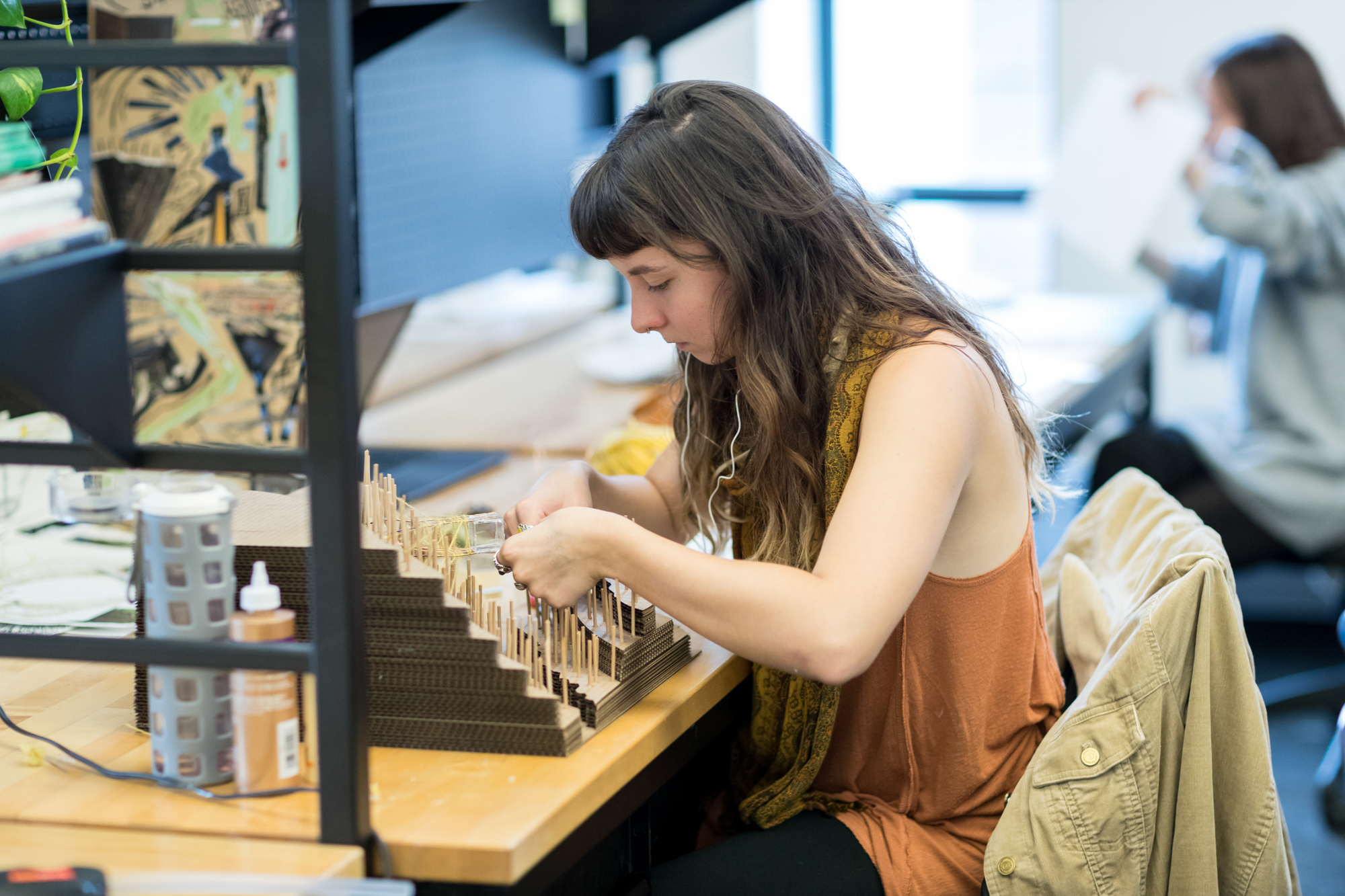Last fall the Department of Landscape Architecture gave second and third-year master’s students the opportunity to select their own studios for the very first time.

“In previous years, each MLA grade level had their own studio in which everyone in the cohort enrolled. This year, we combined our second and third year MLA groups and offered a choice of three different studios, each with one instructor and a different site and focus,” explained Department Head Joe Favour.
The new system not only gives students a wider variety of studio course options but is meant to foster peer mentoring and more individual attention from the studio instructors. It also allows the department more flexibility when creating studio curriculum. “We can be more nimble and capitalize on issues, projects, and/or places that emerge from faculty work or from trends in the discipline,” continued Favour.
Each of the three studios focused on a different area. LA 8201 focused on the Gowanus Canal in Brooklyn, New York and was taught by Assistant Professor Matthew Tucker. Students in LA 8206, section 002 were taught by Senior Lecturer Vince deBritto and Lecturer James Wheeler and worked in Duluth while students in section 001 worked in Alameda, California and were taught by HWS Cleveland Visiting Fellow Jessica Rossi-Mastracci.
“We wanted to give students a choice in their studio site, faculty member, and design challenge,” said Rossi-Mastracci. “Each studio took very different approaches to tackling contemporary landscape architectural challenges, which expanded the range of projects and issues.”
The combination of second and third year MLA students introduced students to a wider group of their peers. Mixing different program levels also gave second-year students a preview of what to expect in their final year of study. “The new option made me push myself beyond what I thought capable at my level,” explained Norman Palacious Jr., a second year MLA student. “In my studio, I worked with third-year graduate students, which exposed me to much higher expectations.”
Student response has been positive so far. “I enjoyed having a choice,” said Maria Grina, a third year MLA student, “I think having options allows students to pursue their interests and take their education into their own hands.”
For its first year in practice, the new system has been well received and the department plans to reflect on what they’ve learned so far to strengthen the new program. “We are excited about the possibilities this system opens up and the positive impacts it will have on the quality of our curriculum moving forward,” concluded Favour.
Administered by the Green Business Certification Inc. (GBCI), the Sustainable Sites Initiative (SITES) Certification provides developers with a comprehensive rating system to help them design and build more sustainable projects.
Landscape architecture students in LA 8205: Urban Form Options had an unusual assignment this spring: design a master plan for the University of Minnesota Twin Cities campuses. In this interview, Danielle Jurichko tells us more about the project and her group’s focus on incorporating principles of nonviolence into their design.
Change is intrinsic to the field of landscape architecture, which has prepared the Department of Landscape Architecture to meet the rapid changes we are facing on a daily basis. As we begin to wrap up the spring semester, I want to share how our department has been adapting and responding.





